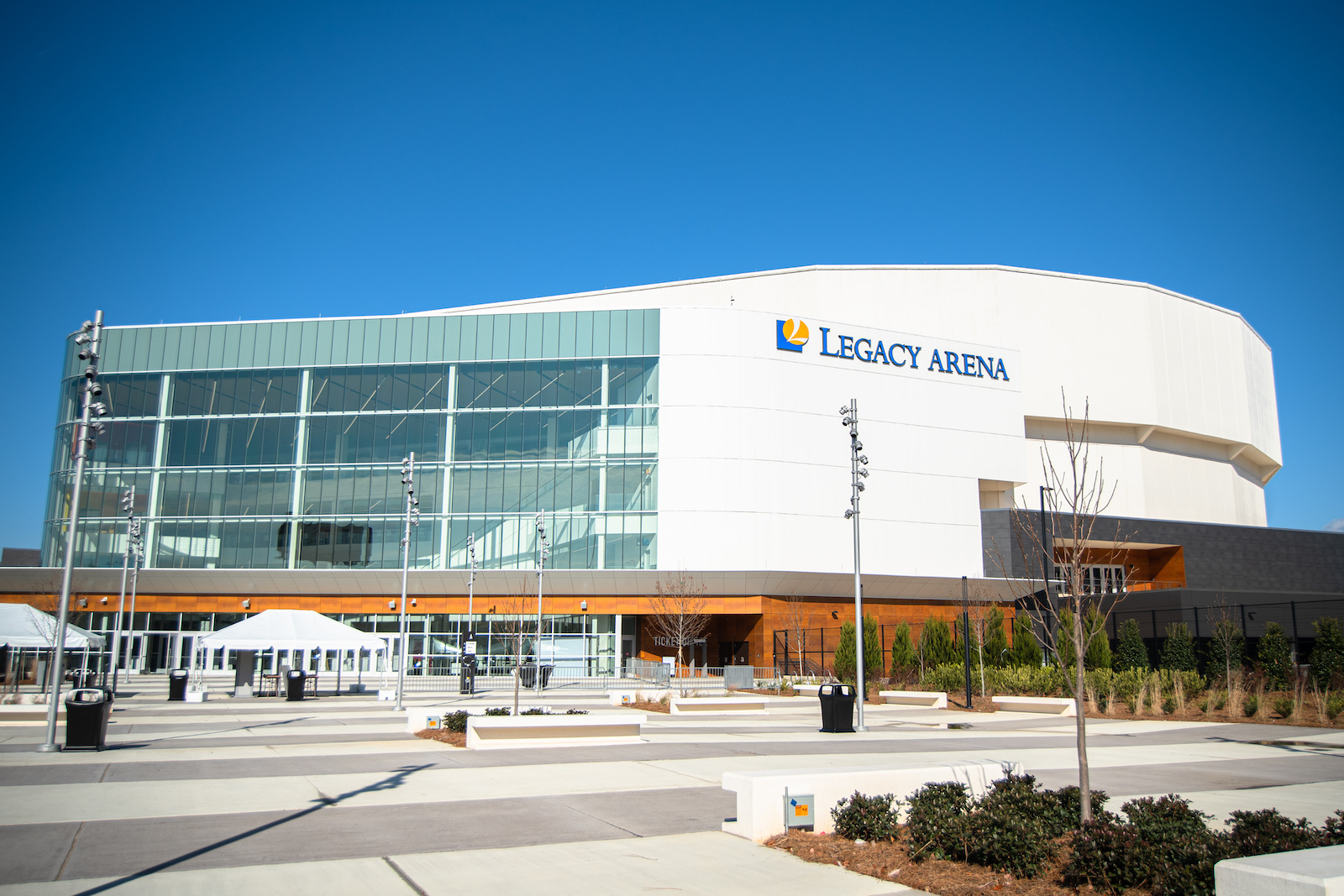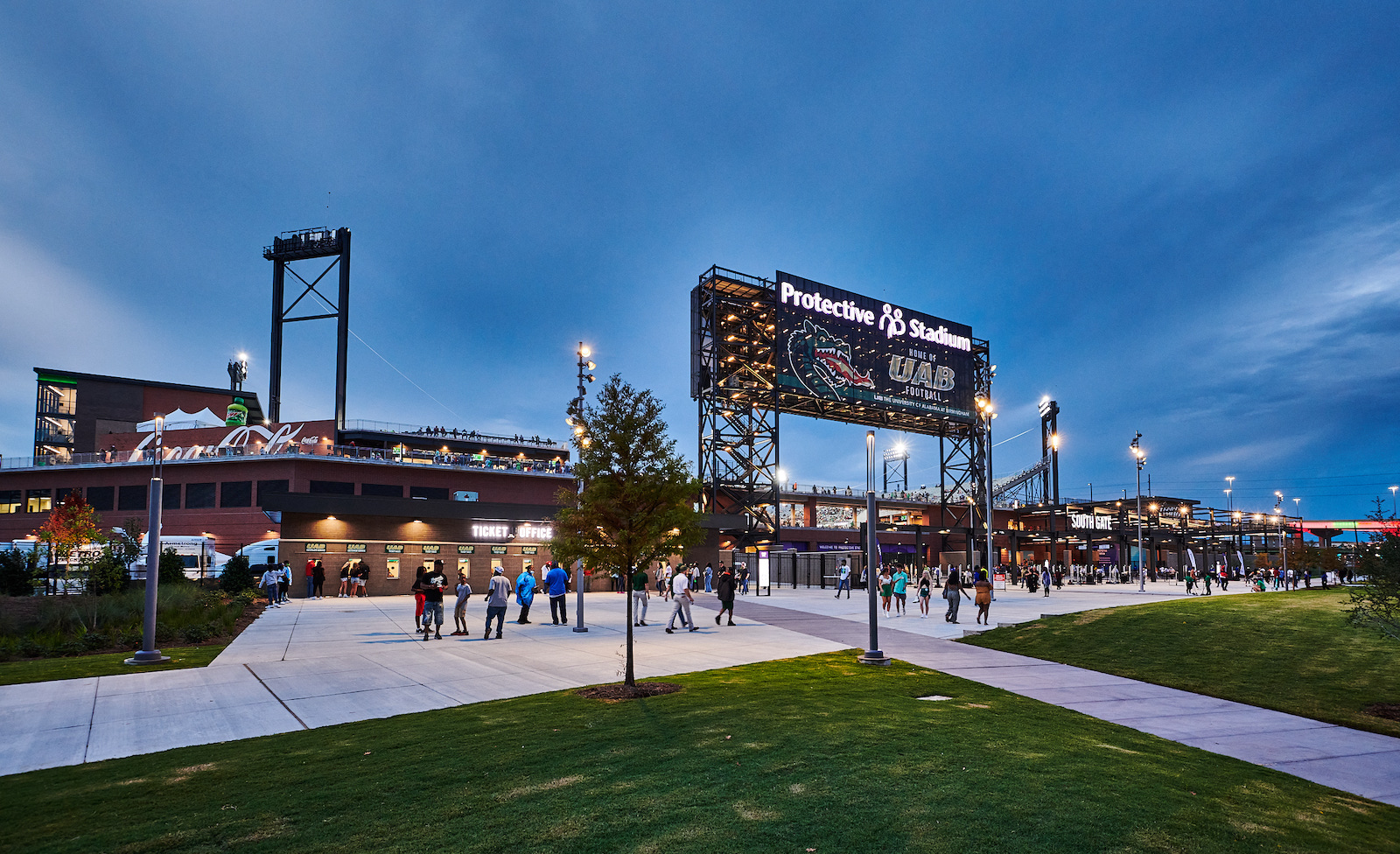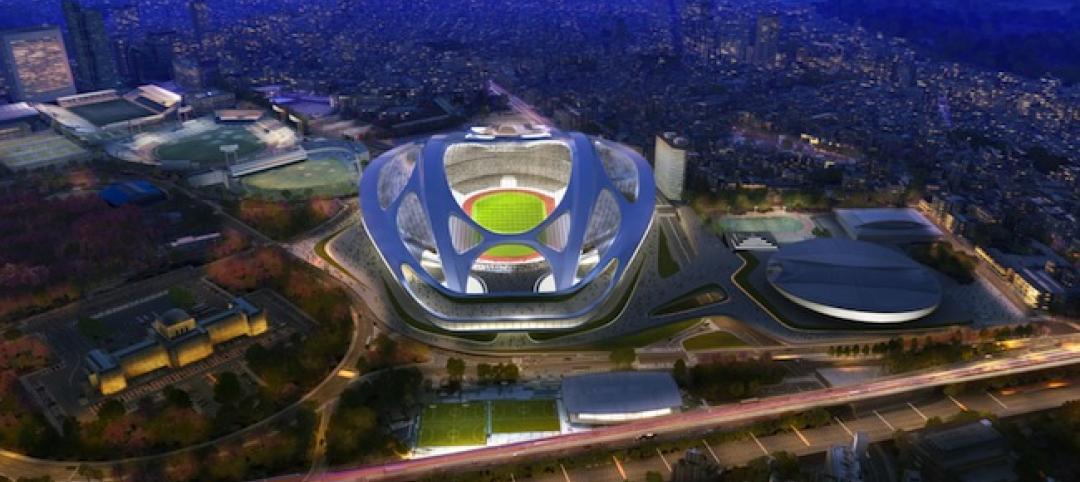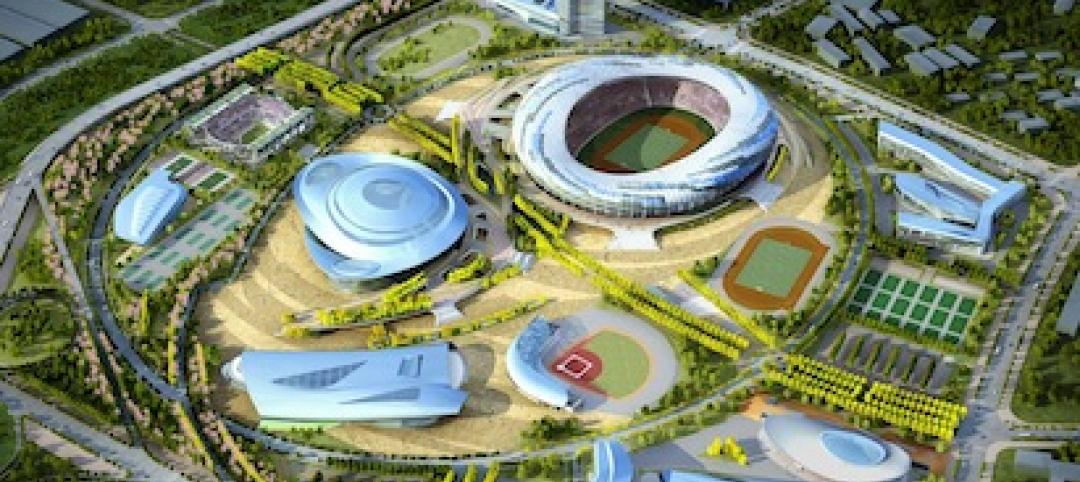Global design firm Populous collaborated with the Birmingham Jefferson Convention Center to open two new venues in Birmingham, Alabama this past Fall. Both venues are located in Birmingham’s downtown area, and are a part of the Birmingham Jefferson Convention Complex (BJCC).
The Protective Plan
The 850,000-sf, $188 million Protective Stadium debuted this past Fall as the new home of the University of Alabama (UAB) at Birmingham football. The idea of a multi-purpose stadium at the BJCC has been part of their strategic plan for many years.
Birmingham wanted to make sure they planned out bringing in a stadium that was unique to their city. Populous and the BJCC had a vision of a stadium designed to accommodate football, soccer, concerts, and other events. The red brick and black steel materials integrated in the complex are influenced by Birmingham’s heritage and landmarks. Every element of the new stadium was thought out strategically to help represent Birmingham.
“Located in the heart of downtown Birmingham and across the street from the popular Uptown entertainment district Populous helped master plan years ago, the site was ideal for a football stadium, so it fits together very nicely,” said Jim Swords, Principal at Populous and Project Manager for both venues, in a release. “One side of the site is urban, and the other is a residential neighborhood. This one-of-a-kind stadium fits right into the site. It is scaled to the surrounding buildings and doesn’t rise above everything in a big sea of parking but is nestled into the surrounding city blocks. You can see the city from the stands, so the design is very much unique to Birmingham.”
Built To Host
A key factor in Populous’ design was making sure that the new stadium was “right sized” to attract more regional and high profile events to Birmingham. The BJCC has scheduled the Super 7 championships, the TicketSmarter Birmingham Bowl, and the opening and closing ceremonies for The World Games next summer.
As mentioned, the UAB football team was also a huge part of Populous and the BJCC’s original plan. They wanted to make sure that they provided a true college football atmosphere, and there’s no better way to do that than by having one of the largest scoreboards in the sport. There’s also a standing room plaza student section and a 360 degree concourse that circles the stadium.
Reconstruction of a Legacy

The work with Protective Stadium was not the only project the BJCC funded, and it was not the only project that Populous designed recently. Both companies teamed up again to work on the extensive, $71.7 million reconstruction of the 45-year-old Legacy Arena. They updated the old building into a modern 335,000-sf multipurpose arena that can hold 15,000 people for basketball, 16,000 for center stage concerts, and 12,000 for end concerts.
“The reconstruction of Legacy Arena was all about turning an old building into a new building, making a famed venue into a modern arena while keeping its character,” Swords said, in a release. “While everyone could see Protective Stadium being built from the outside, the arena rebuild was mostly hidden from public view. People will be amazed when they walk into Legacy Arena because it’s a 45-year-old building that will look brand new on the inside.”
New Features
The most obvious update to the facility is the new exterior. It replaces the original facade, and provides a new ground level entry that faces downtown Birmingham. There’s also a plaza entry that welcomes visitors to the glass lobby, in which they can enjoy natural light while taking a look at the views of the city.
The arena has been revitalized into a sports venue, and the new lobby features new stairs, elevators and escalators that gives the crowd the access they need. Concession stands and restrooms were also upgraded to meet today’s standards.
Inside the arena, the seating bowl itself has been upgraded. There are new seats throughout, as well as premium amenities like 12 brand new suites, a new Upper-Level Club and a newly renovated Arena Club. Also in the seating bowl, improvements were made on an operational level, such as a new sound system, lighting, ribbon boards, and other infrastructure.
Populous served as architect of record for both the new 42,000-seat Protective Stadium and the completely redesigned 15,000-seat Legacy Arena.
Related Stories
| Jun 12, 2014
Austrian university develops 'inflatable' concrete dome method
Constructing a concrete dome is a costly process, but this may change soon. A team from the Vienna University of Technology has developed a method that allows concrete domes to form with the use of air and steel cables instead of expensive, timber supporting structures.
| Jun 11, 2014
Esri’s interactive guide to 2014 World Cup Stadiums
California-based Esri, a supplier of GIS software, created a nifty interactive map that gives viewers a satellite perspective of Brazil’s many new stadiums.
| Jun 4, 2014
Construction team named for Atlanta Braves ballpark
A joint venture between Barton Malow, Brasfield & Gorrie, Mortenson Construction, and New South Construction will build the Atlanta Braves ballpark, which is scheduled to open in early 2017. Check out the latest renderings of the plan.
| Jun 2, 2014
Parking structures group launches LEED-type program for parking garages
The Green Parking Council, an affiliate of the International Parking Institute, has launched the Green Garage Certification program, the parking industry equivalent of LEED certification.
| May 29, 2014
7 cost-effective ways to make U.S. infrastructure more resilient
Moving critical elements to higher ground and designing for longer lifespans are just some of the ways cities and governments can make infrastructure more resilient to natural disasters and climate change, writes Richard Cavallaro, President of Skanska USA Civil.
| May 22, 2014
Just two years after opening, $60 million high school stadium will close for repairs
The 18,000-seat Eagle Stadium in Allen, Texas, opened in 2012 to much fanfare. But cracks recently began to appear throughout the structure, causing to the school district to close the facility.
| May 20, 2014
Kinetic Architecture: New book explores innovations in active façades
The book, co-authored by Arup's Russell Fortmeyer, illustrates the various ways architects, consultants, and engineers approach energy and comfort by manipulating air, water, and light through the layers of passive and active building envelope systems.
| May 19, 2014
What can architects learn from nature’s 3.8 billion years of experience?
In a new report, HOK and Biomimicry 3.8 partnered to study how lessons from the temperate broadleaf forest biome, which houses many of the world’s largest population centers, can inform the design of the built environment.
| May 16, 2014
Toyo Ito leads petition to scrap Zaha Hadid's 2020 Olympic Stadium project
Ito and other Japanese architects cite excessive costs, massive size, and the project's potentially negative impact on surrounding public spaces as reasons for nixing Hadid's plan.
| May 13, 2014
First look: Nadel's $1.5 billion Dalian, China, Sports Center
In addition to five major sports venues, the Dalian Sports Center includes a 30-story, 440-room, 5-star Kempinski full-service hotel and conference center and a 40,500-square-meter athletes’ training facility and office building.

















